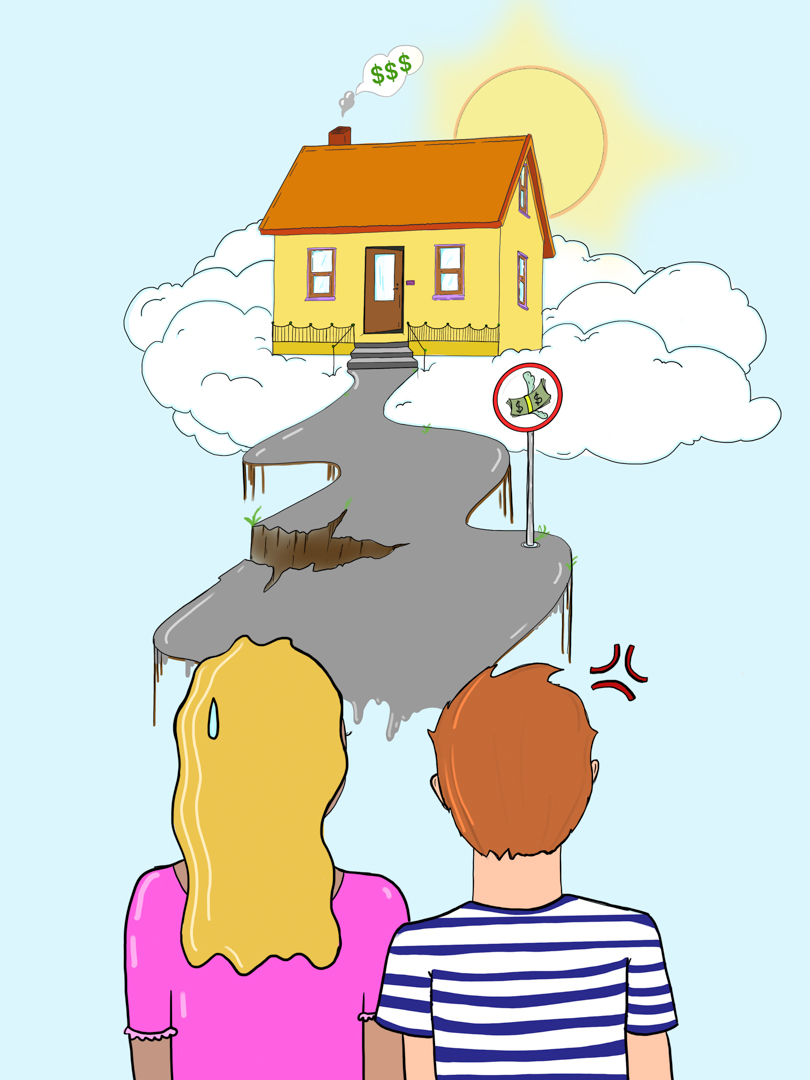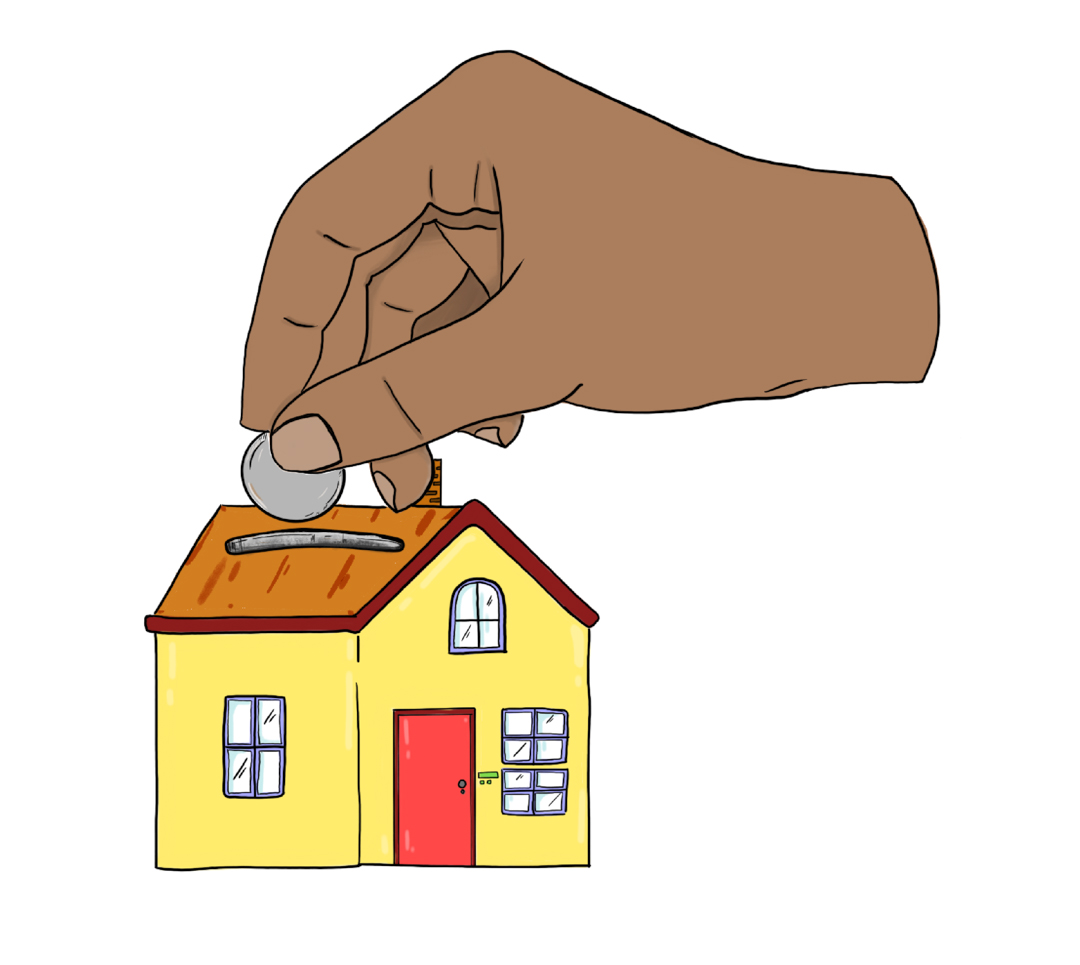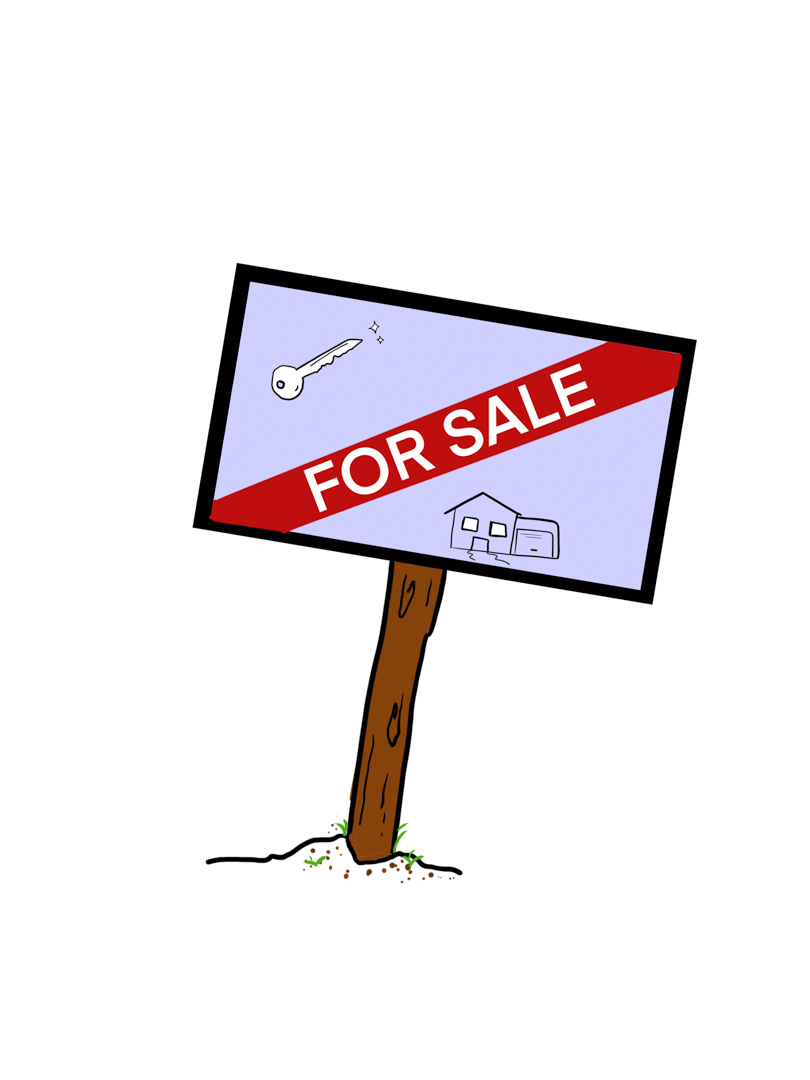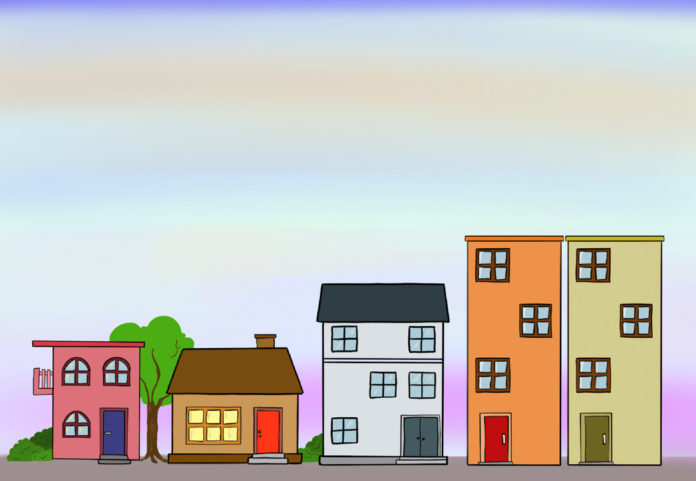
What income levels can afford a million-dollar mortgage? How can someone save for a down payment on a million-dollar house while struggling to pay such high rent? Is owning a home in the Fraser Valley an attainable goal in 2022? These are questions I, Alyssa, ask myself daily, along with many other young British Columbians planning their futures.
Currently, my fiancé and I are looking to move into a detached home that aligns with our goals as a couple. We purchased a condo in 2017, and since then it has soared in value from $245,000 to approximately $650,000. Despite this jump in overall equity to put towards a detached home, we are finding that even most townhouses are beyond our reach. My fiancé is an industrial electrician and I am completing my undergrad in April for social work, along with currently working full-time as a support worker. We both have very well-paying jobs, but despite our net income, the Fraser Valley is not affordable. Because of the high cost of housing, we are considering relocating to another province. It saddens me that we are being pushed out of our home province, where all our friends and family are. We want to provide our future family with the same childhood that we had — a big backyard with a trampoline, a blow-up pool in the summer, and a garden where we can grow vegetables and fruits. Is this realistic for us if we remain in the Fraser Valley?
When looking at a single person with a good career, we can see more barriers when it comes to owning a home or upgrading their existing one. Ashlee purchased a two-bedroom apartment in Abbotsford in 2010 for $125,000. She was only twenty-one years old, but the cost of the apartment was low, which also meant the down payment was an attainable sum to manage (around $7,000). She was also able to co-sign the mortgage loan with her father, a privilege that not all are afforded. She worked eight years in retail to fulfill the mortgage payments and she retained roommates to offset monthly expenses. Twelve years later, her residence is currently valued at around $420,000, an increase of just over 236 per cent. Even with this shocking jump of $295,000 worth of equity, it is still insufficient in her quest to upgrade to a detached house or even a townhouse in the Fraser Valley with a soon-to-be career as a social worker. The real estate market she was once able to buy into as a single person is now beyond her reach should she choose to sell her apartment.
To dig deeper and uncover the numbers associated with the housing market in BC we turned to the Fraser Valley Real Estate Board (FVREB) for the following statistics from January 2010 to January 2022. The data indicated that there was a 213 per cent increase in benchmark prices for detached homes in the last 12 years. What once cost $500,931 now costs a staggering $1.569 million. Similar situations can be observed in the market for townhouses and apartments, which also saw gains of 150 per cent and 135 per cent respectively.
This dramatic price hike originated in 2017, according to our research based on the statistics provided by the FVREB. In January 2017, the benchmark prices of single-family detached homes increased by 24.3 per cent, townhomes increased by 28.8 per cent and apartments increased by 27.6 percent within the span of just one year. Prices have been steadily increasing since then, and we see the highest jump yet between 2022 and 2021, when the benchmark price for detached homes, townhomes and apartments increased by 41.8 per cent, 37.2 per cent and 30.6 percent respectively. Brendon Ogmundson, British Columbia Real Estate Association’s (BCREA) chief economist, suggests that a contributing factor to this housing market frenzie is due to supply and demand; many are wanting to buy and little is available for sale.
Disparities in the Fraser Valley rental market making it difficult to transition from renting to owning
High rental costs are a major barrier for people wanting to become homeowners. Between 2015 and 2019, the average rental cost in Abbotsford increased by 34 per cent for all rental units. According to BC Housing, “housing is considered affordable when 30 per cent or less of your household’s gross income goes towards paying for your housing costs.” This 30 per cent rule originated in the 1969 amendment to public housing requirements: the Brooke Amendment. Sally French, financial writer for the New York Times, states that this rule is increasingly outdated because it doesn’t account for modern expenses that are prevalent today, nor does it take into consideration individual circumstances, such as how many dependents one is supporting.

The Abbotsford B.C. Housing Needs Report from 2021 identifies the following populations to be most vulnerable to not being able to meet their housing needs. Seniors, 14 per cent of whom live with low income, can apply for rental assistance through the Shelter Aid for Elderly Renters (SAFER) program. Seniors also trend towards being illegally evicted due to living in rent-controlled apartments. People with special needs also face barriers when finding accessible housing, especially in Abbotsford, where 56 per cent of housing stock was built before 1990 and often lacks accessibility features. Low-income renters, who make up 34 per cent of all rental households in Abbotsford, face a higher risk of eviction. Indigenous peoples are disproportionately represented in Abbotsford’s homeless population due to historical trauma, oppression, and discrimination, which has resulted in structural issues that create greater barriers to housing like poverty, low education levels, and unemployment. Families, especially single-parent households, also struggle to attain affordable three-plus-bedroom housing options. Finally, individuals in “extreme and core housing need,” meaning they spend more than 50 per cent of their income on housing, made up 5.6 per cent of Abbotsford households in 2016. If these key groups of people are struggling to pay their rent each month, how could they ever save enough to afford a down-payment on a home?
BC does have a First Time Home Buyers Program to reduce or eliminate the property transfer tax for people buying their first home. As well, Canada’s Home Buyers’ Plan is a program that allows first-time home-buyers to take money out of their Registered Retirement Savings Plans (RRSPs) to be able to pay for the down payment. The minimum down payment is five per cent on a home that costs under $500,000. This is a great initiative to get people into homes, but now they are left with a massive mortgage payment each month, along with purchasing mortgage insurance, which is a requirement when your down payment is less than 20 per cent.
Stagnant wages don’t match with rising inflation
As a society, we need to recognize that the issue is not that young people do not want to work. The problem is rising housing prices and stagnant wages. In 2011, BC saw the first minimum wage increase in a decade, as hourly wages rose from $8.75 to $9.50. Minimum wage has been slowly but surely increasing ever since then, and on June 1, B.C.’s minimum wage will reach $15.65 an hour. This 78.85 per cent increase in wages still does not match the 213 per cent increase in the housing market. Stats Canada shared the results of a 2022 survey that revealed Canadian wages increase approximately 3.1 per cent annually, with Canadian inflation rising 5.1 per cent on a year-over-year basis (2022 having the highest inflation rate Canada has seen since 1991).

This inflation of housing prices has happened alongside a dramatic increase in the minimum wage. So it may be appropriate to address the disparity between the wage increases not matching the market, but there is no wage hike that could tackle that. Wages were stagnant for too long, but further increases aren’t a magic bullet either. It’s a market problem that requires market solutions.
The “living wage” in the Fraser Valley still does not equal the minimum amount employers have to pay their workers. Living Wage for Families calculated that the cost of living for two working parents with two children must earn $16.75 an hour to be able to pay for their basic needs. Living wage does not take into account what would be necessary to save for a down payment at the pace of the market. If that figure was acknowledged, over how long would we expect someone to work before being able to afford a down payment? Unfortunately, the living wage allows for only that: living. No advancement, dreams or betterment of any kind. Your rent is paid and you survive another two weeks. Better be able to do it again, and again, and again.
Foreign buying, using the market as income, and the colonial history of settlement expansion
There are many more factors to consider when talking about B.C.’s absurd housing market, such as the government’s response to foreign purchasing. Currently, there is no cap on how much real estate foreign buyers can possess, but foreign buyers pay 20 per cent tax and a vacancy tax on all their properties. While foreign investors benefit those wanting to sell their homes, this flood in the buyers market has caused many who live here to not be able to enter the market at all. This brings into question another factor of people using the market as income, as those who own their homes use their equity to buy rental properties or to help their children enter the market.
For many, the housing market has become the most lucrative means of saving for retirement. Forty years ago, when interest rates were much higher, mortgages were expensive and savings accounts offered an incentive to squirrel money away for the future. Today, savings accounts offer a paltry 0.010 per cent, and locking your money away for five years doesn’t equate to a windfall either. Housing, on the other hand, has proven to be a surefire investment in recent decades. In a 2021 interview with Global News, Paul Kershaw, founder of Generation Squeeze and policy professor in the UBC School of Population Health, stated that, “We have tolerated rising home prices because it has made homeowners who got into the housing market earlier get rich while we sleep, watch television, and cook.” Those who got into the housing market early are incentivised to want prices to climb. Unfortunately, this comes at the expense of those who arrived later.
We should also consider the colonial history of settlement expansion as Europeans sought the Americas and Australia with the expectation of land that had grown scarce in Europe, and how that legacy still informs many of our notions of home ownership. Many Canadians were raised with the expectation that a stable career was the only real prerequisite to owning a detached home with a yard — and for a long time, that was a realistic expectation, provided you were willing to commute. Whether or not that expectation is realistic, it’s interesting to see where it comes from, as it’s certainly not universal. Historically, going “out west” was synonymous with seeking land, and that generational expectation of a plot of land all to oneself can be seen in the urban sprawl that plagues Metro Vancouver. Faced with an immensity of space, it’s easy, and totally understandable to pine for the same, but there is a price to be paid, and historically, we have made Indigenous communities pay that price in our stead. As populations increase, if we don’t adjust our expectations, we are doomed to continue on a devastating trajectory.
Solutions B.C. has posed to address the housing crisis
The housing crisis in B.C. is one that many experts have pondered over for the last decade. The B.C. government has made claims before that they are working on resolving the disparity in wages versus housing affordability. In 2018, they published a “30-point plan for a fairer housing market” that addressed issues like stabilizing the market by increasing the foreign buyers tax, working against tax fraud and evasion, building more affordable homes for key populations like seniors and students, and strengthening rental assistance programs for low-income individuals and families. Some progress is being made, as 32,000 homes for target populations have been completed or are currently in construction. The B.C. Student Housing Loan Program allows public post-secondary institutions to borrow money from the province to build more on-campus student housing units. On-campus housing has already expanded by 25 per cent at the University of Victoria thanks to this program. Will UFV take advantage of this program to expand our available on-campus housing to hold more than 1.3 per cent of the student body?
Economics is hard. Vancouver-born educator, Laurence J. Peter stated, “An economist is an expert who will know tomorrow why the things he predicted yesterday didn’t happen today.”
As Canadians grapple with the housing crisis, it’s important to consider that we didn’t get here overnight. As convenient as it might be, there is no single reason or policy to point to as the root cause of the situation. Whether it be provincial policies or municipal zoning; foreign buyers or local investors; Boomers, Millennials, stagnant wages, interest rates, or inflation — there’s plenty of blame to go around. Similarly, there’s no magic fix that will remedy the situation, so beware those who offer one.
The scope and complexity of the problem of Metro Vancouver housing is precisely what makes it a crisis. Those who have yet to enter the market are effectively shut out for the time being. Meanwhile, new construction adds to an increasing supply, decreasing demand in an already overpriced market. If (or when) the market collapses, a possibility looming larger by the day, the heights of the housing boom will be matched only by the calamity of the fallout.



